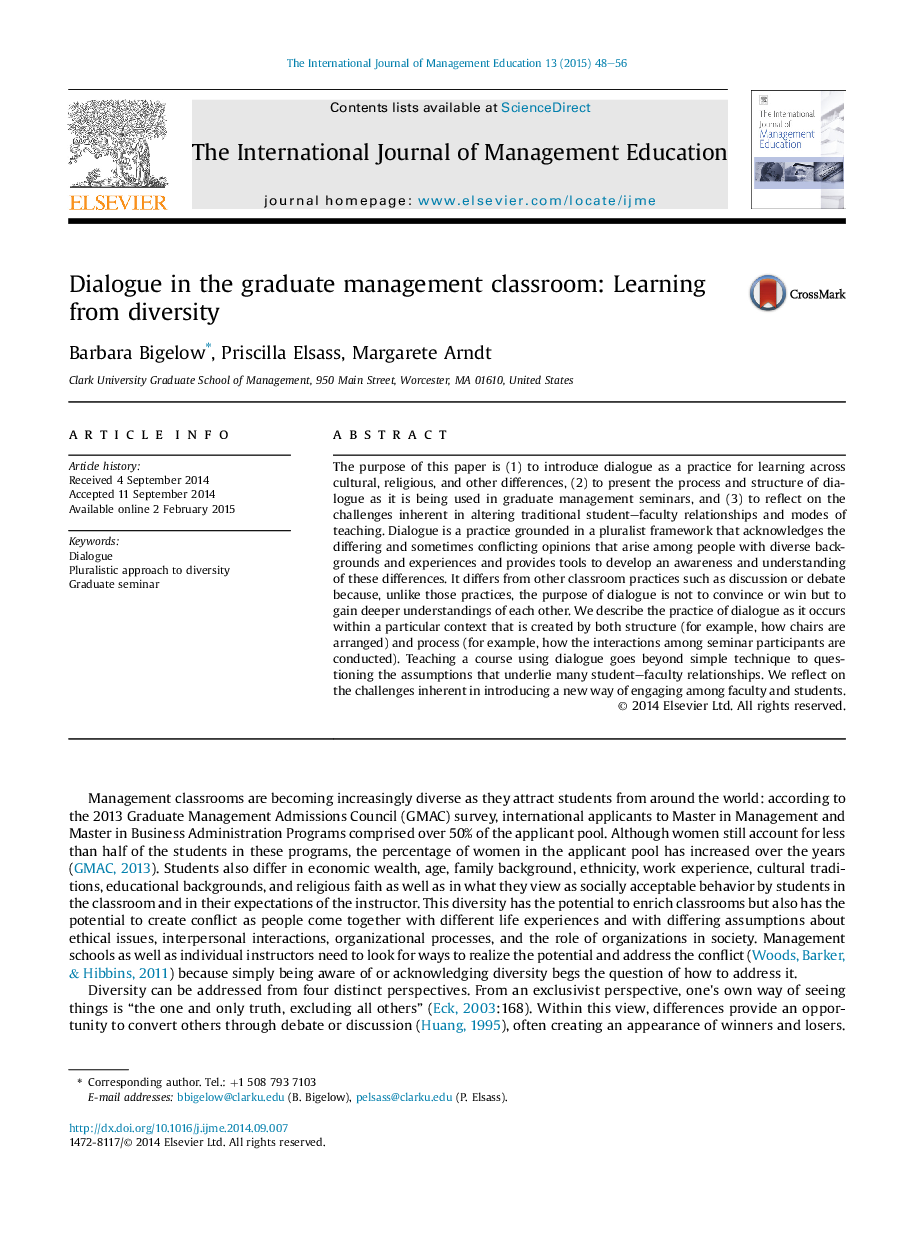| Article ID | Journal | Published Year | Pages | File Type |
|---|---|---|---|---|
| 357365 | The International Journal of Management Education | 2015 | 9 Pages |
•Dialogue is a powerful teaching tool based on a pluralistic approach to diversity.•Dialogue enhances student learning through deep understanding of diversity.•Structure and processes are both critical to the use of dialogue in the classroom.
The purpose of this paper is (1) to introduce dialogue as a practice for learning across cultural, religious, and other differences, (2) to present the process and structure of dialogue as it is being used in graduate management seminars, and (3) to reflect on the challenges inherent in altering traditional student–faculty relationships and modes of teaching. Dialogue is a practice grounded in a pluralist framework that acknowledges the differing and sometimes conflicting opinions that arise among people with diverse backgrounds and experiences and provides tools to develop an awareness and understanding of these differences. It differs from other classroom practices such as discussion or debate because, unlike those practices, the purpose of dialogue is not to convince or win but to gain deeper understandings of each other. We describe the practice of dialogue as it occurs within a particular context that is created by both structure (for example, how chairs are arranged) and process (for example, how the interactions among seminar participants are conducted). Teaching a course using dialogue goes beyond simple technique to questioning the assumptions that underlie many student–faculty relationships. We reflect on the challenges inherent in introducing a new way of engaging among faculty and students.
